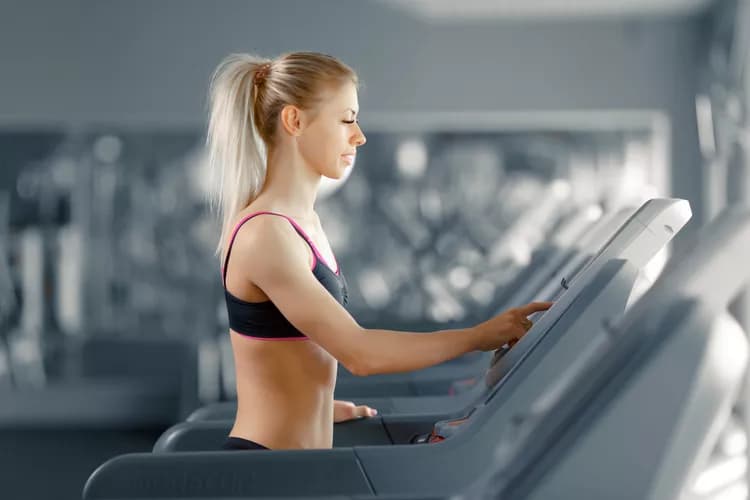
Do Foot And Tibia Angles Affect Loading Impact Rates In Runners?
The foot and tibial angles of a rearfoot strike runner do not correlate well with loading impact rates, according to research presented this week at the Association of Academic Physiatrists Annual Meeting in Las Vegas, Nevada.
Running is one of the most popular forms of fitness. Despite numerous health advantages, running injuries are common with incidence rates ranging from 19.4 to 79.3 percent. Foot strike patterns have been a topic of debate with regards to injury risk in runners. Foot strike patterns are typically separated into three categories: rearfoot strike, where the runner's heel hits the ground first; midfoot strike, where the runner's foot lands flat; and forefoot strike, where the runner's ball of the foot lands on the ground first.
Runners with a rearfoot strike make up 69 to 95 percent of modern competitive and recreational endurance runners. A rearfoot strike is associated with an abrupt impact and increased force applied to the runner's leg and foot (called a load rate), which can lead to injury.
Forefoot runners have been reported to sustain less injury than rearfoot runners. Rather than transitioning to a forefoot running pattern, which takes time to adjust to, it has been suggested that landing with a less dorsiflexed foot and a more vertical tibia (or, shinbone, as it is commonly called) is a way to lower impact on the leg and foot. In order words, landing with a near flat foot onto the ground.
To address this, researchers recently studied the relationship between foot angle (angle formed between the ground and foot on initial contact with the ground) & tibial angle (angle of the tibia from perpendicular landing) with vertical average load rate as well as vertical instantaneous load rates. These load rates are a subset of values involved in ground reaction forces. A ground reaction force is the force exerted by the ground onto the body at the time when the body comes into contact with the ground.
"In runners, the association of higher impact loading rates and injury risk has been demonstrated in previous studies," says Robert Diaz, MD, resident physician at Spaulding Rehabilitation Hospital/Harvard Medical School and lead investigator in the study. "To obtain this valuable information, a clinic would need to utilize expensive equipment such as an instrumented treadmill lab with motion capture cameras and computer software to analyze 3D models and force data. Our team wanted to identify a proxy for loading impact rates to attempt to use this information in a typical musculoskeletal or sports medicine clinic without the expensive equipment. The proxies we chose included the foot and tibial angle values on footstrike that were obtained using a digital camera that any clinic would have access to. We hypothesized that those rearfoot strike runners that had higher foot and tibial angles would have higher impact loading rates, and therefore would have a higher risk of a running injury."
Dr. Diaz's team studied 110 runners who typically run barefoot. Sixty-nine of these runners were being treated for a running injury at the time of the study, and 41 of the runners were healthy. The group, which was evenly split between men and women, had an average age of 36, an average BMI of 23, and were rearfoot.
The participants each ran on a treadmill while a highspeed camera recorded 10 consecutive left foot strikes. Dr. Diaz's team used the video footage to calculate average foot and tibial angles as well as vertical average load rates and vertical instantaneous load rates in each participant.
In the group of injured runners, Dr. Diaz's team found no association between foot angles and tibial angles and vertical average load rates or vertical instantaneous load rates. The average foot angle was similar between the group of injured runners and the group of healthy runners, but the tibial angles were increased in health runners. The significance of this finding is unclear. Finally, both vertical average and instantaneous load rates were higher in injured runners than in healthy runners consistent with prior literature.
"Based on our team's study, unfortunately a rearfoot strike runner's foot and tibial angles do not correlate well with loading impact rates," Dr. Diaz notes of the findings. "We recommend to our colleagues not to use these angles as surrogates for estimating impact loading in runners. Our data suggests that there are other contributors, besides foot and tibial angles, that are important to determine impact loading values. For those runners who are interested in lowering their impact loading and injury risk, we recommend evaluation in a running lab."
Materials provided by Association of Academic Physiatrists (AAP). Note: Content may be edited for style and length.
Disclaimer: DoveMed is not responsible for the accuracy of the adapted version of news releases posted to DoveMed by contributing universities and institutions.
Related Articles
Test Your Knowledge
Asked by users
Related Centers
Related Specialties
Related Physicians
Related Procedures
Related Resources
Join DoveHubs
and connect with fellow professionals

0 Comments
Please log in to post a comment.